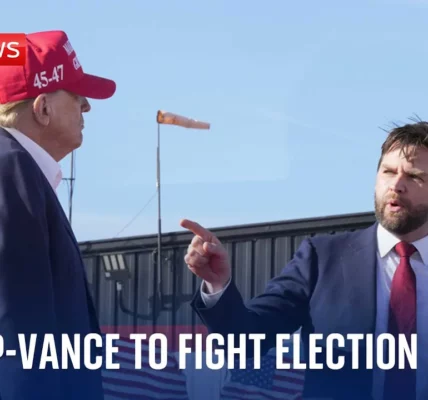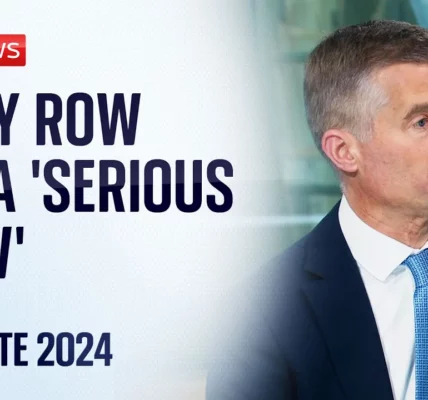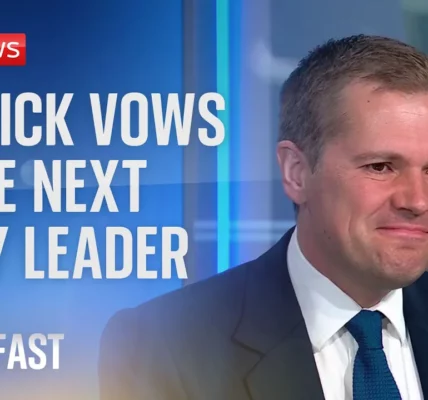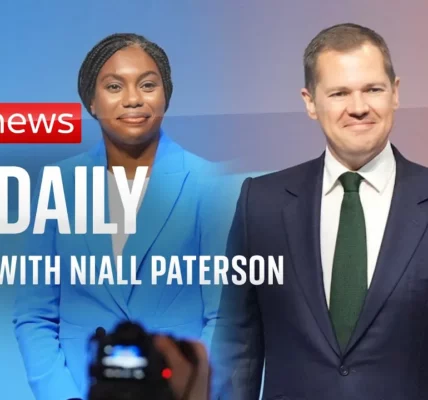Donald Trump’s News Conference: Insights and Analysis

This article delves into former President Donald Trump’s first public appearance since Kamala Harris was nominated as the Democratic Presidential candidate, exploring his statements about immigration, the current administration, and the political landscape leading up to the November elections.
Introduction
In a significant political moment, former President Donald Trump held a news conference, marking his first public appearance since Kamala Harris was selected as the Democratic Presidential nominee. During this conference, Trump addressed a myriad of pressing issues, including immigration policies, the current administration’s effectiveness, and the upcoming presidential debates against Kamala Harris and her running mate, Tim Waltz. This article aims to dissect Trump’s statements, analyze their implications, and provide context for the current political climate.
Trump’s Accusations on Immigration
One of the focal points of Trump’s news conference was his stark criticism of the current administration’s immigration policies. He claimed that the United States has seen an influx of individuals from prisons, mental institutions, and other facilities worldwide. This assertion raises several important discussions about immigration policy and its impacts:
- Claims of Prison Releases: Trump alleged that individuals from prisons are being released into the U.S., a claim he has made previously. This statement reflects his ongoing narrative regarding border control and public safety.
- Mental Health Institutions: By referring to “insane asylums,” Trump sought to evoke a strong emotional response regarding mental health and safety, although critics argue this framing is misleading.
- Global Context: Trump’s remarks imply a broader global issue where various countries are purportedly emptying their institutions, leading to a surge of individuals entering the U.S.
However, many analysts have pointed out that such claims often lack empirical support and can contribute to stigmatization of mental health issues.
Critique of the Current Administration
Trump did not shy away from criticizing President Biden and Vice President Harris, stating that they represent the “worst” leadership in U.S. history. This section explores his key arguments:
Worst President in History
Trump labeled Biden as the worst president, a common refrain among his supporters. This strong assertion is aimed at galvanizing his base and framing the upcoming election as a referendum on Biden’s performance.
Vice President Harris’ Popularity
Trump’s critique extended to Vice President Harris, whom he described as the “least admired” vice president. This claim aims to undermine her credibility and appeal among voters.
The Political Landscape Ahead of the Election
As the election approaches, Trump’s news conference serves as a strategic effort to re-engage with voters amidst a shifting political landscape:
Republican Response to the Democratic Campaign
With Harris and Waltz gaining media traction, Trump’s conference was seen as essential for revitalizing Republican messaging. Key points include:
- Response to Democratic Momentum: Trump’s emphasis on immigration and economic concerns is an attempt to redirect the narrative back to Republican priorities.
- Public Engagement Strategies: The conference displayed Trump’s intent to connect with his base and re-establish his presence in the media.
Upcoming Presidential Debates
Trump proposed three debate dates, illustrating his eagerness to engage directly with Harris. The proposed dates are:
- September 4
- September 10
- September 25
Trump’s insistence on these debates reflects a desire to showcase his policies and counter the Democratic narrative while addressing his past debate experiences.
Conclusion
Trump’s recent news conference has highlighted critical issues surrounding immigration, the effectiveness of the current administration, and the upcoming presidential debates. His aggressive rhetoric and strategic positioning illustrate his campaign’s focus on redressing voter concerns as the election nears. As the political landscape continues to evolve, it remains to be seen how these developments will influence voter sentiment. For more insights on this topic and ongoing political analysis, visit our related articles on the current U.S. election landscape.
“`




